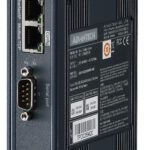![]() ODVA announced today that it has published enhancements to The EtherNet/IP Specification, which outline integration of NAMUR NE 107 diagnostics for process automation into CIP architectures. The addition of this capability provides industry-standard diagnostic information for process users while leveraging the benefits of industrial Ethernet. “The integration of NE 107 diagnostics is another step in fulfilling ODVA’s vision for the Optimization of Process Integration,” said Dr. Al Beydoun, President and Executive Director at ODVA.
ODVA announced today that it has published enhancements to The EtherNet/IP Specification, which outline integration of NAMUR NE 107 diagnostics for process automation into CIP architectures. The addition of this capability provides industry-standard diagnostic information for process users while leveraging the benefits of industrial Ethernet. “The integration of NE 107 diagnostics is another step in fulfilling ODVA’s vision for the Optimization of Process Integration,” said Dr. Al Beydoun, President and Executive Director at ODVA.
The process diagnostics update to EtherNet/IP creates a CIP Process Device Diagnostics Object, which provides a known, public interface to a device’s current diagnostics and NE 107 status according to the NAMUR recommendation NE 107 for Self-Monitoring and Diagnosis of Field Devices. The NAMUR NE 107 status signal that is now available with EtherNet/IP provides the following status information: Failure, Function Check, Out of Specification, Maintenance Required, or None. The CIP Process Device Diagnostics Object expands the amount of useful data available with EtherNet/IP by providing access to the current NE 107 diagnostics information of a field device from different vendors.
In addition to the status signal, the CIP Process Diagnostics Object maps up to 64 diagnoses from a device, such as flow, pressure or temperature status, that the user can group as desired. Vendor-specific additional diagnoses can be added as well. Applications can now efficiently poll supported EtherNet/IP field devices for changes of diagnostic status and can obtain additional diagnostics information using explicit messaging or object-specific services. For example, all devices diagnosed with a certain NE 107 signal (such as Maintenance Required) can be polled by a single common service request. With EtherNet/IP, this vital diagnostic information can be easily transported where it needs to go, such as to a DCS for an operator’s review and potential maintenance action or to an edge device for predictive maintenance analysis. “The integration of NE 107 diagnostics was designed to meet the needs of application programmers, operators, and maintenance technicians from both a process optimization and IIoT perspective,” stated Dr. Beydoun.
The integration of HART devices and NAMUR NE 107 Process Diagnostics into the Common Industrial Protocol (CIP) suite continues ODVA’s efforts to adapt EtherNet/IP to the full spectrum of process industries’ needs. Future efforts include profiles for field devices to simplify device integration and comprehensive device configuration methods. ODVA is also involved in industry-wide efforts to promote adoption of Ethernet in the process industries, such as its collaboration with FieldComm Group and PROFIBUS and PROFINET International to help promote adoption of an Advanced Physical Layer, known as “Ethernet-APL,” that will be made possible by forthcoming enhancements to the IEEE 802.3 Ethernet standard for long-reach single pair Ethernet and use in hazardous areas.



Leave a Reply